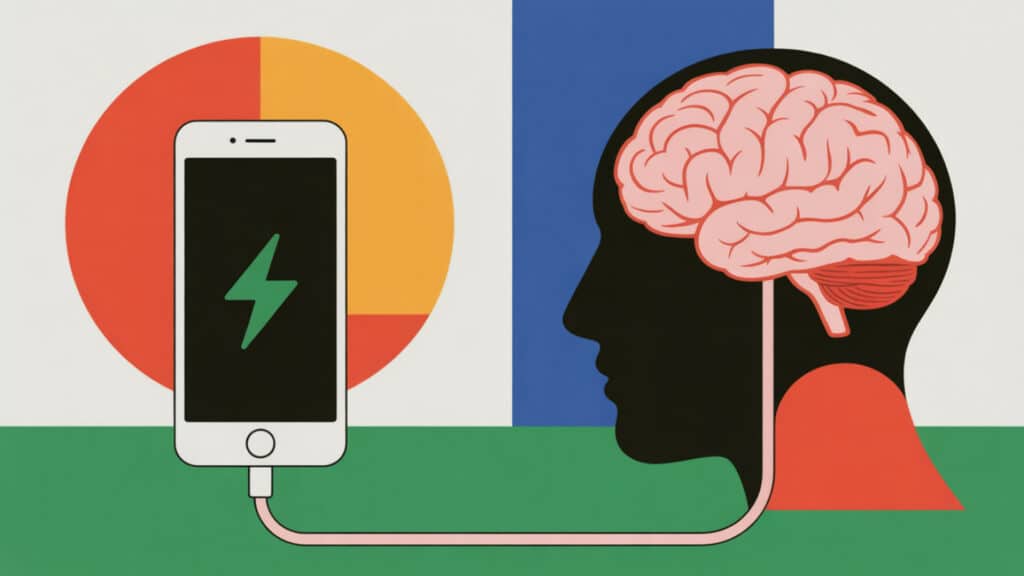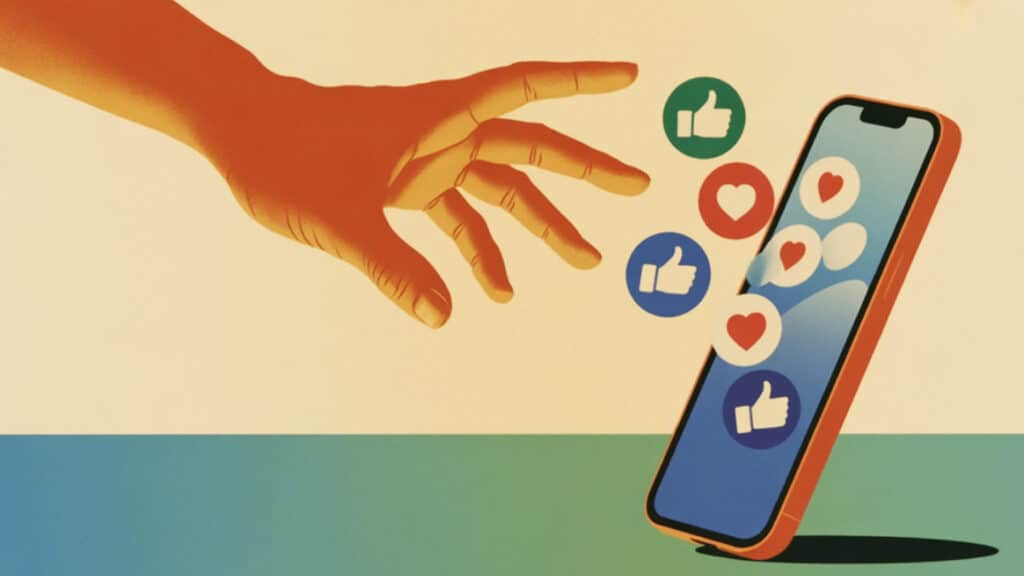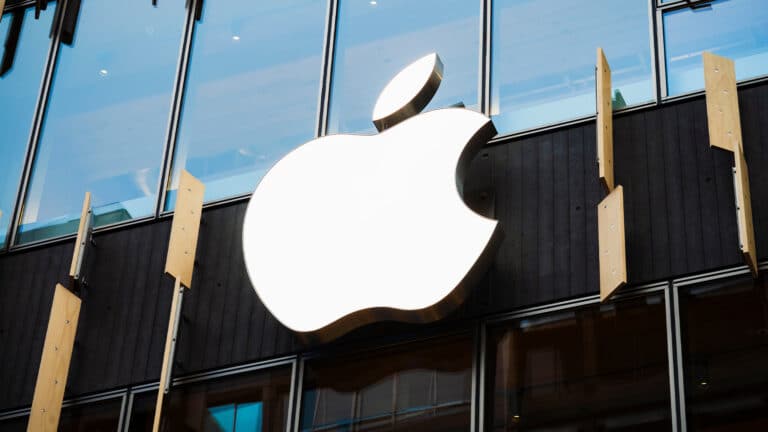
Distractions are constant. Smartphone notifications pop up, and we instinctively reach for our devices. Hours pass scrolling not by lack of willpower, but because tech companies deliberately design platforms to keep our attention by exploiting our brain’s reward systems.
Before diving into the details, it’s important to understand how technology shapes our habits and what concrete steps you can take to regain control.
What is the dopamine trap?
The dopamine trap refers to a cycle in which technology platforms use psychological triggers to repeatedly draw users back, reinforcing behaviors that rely on our brain’s dopamine-driven reward system.
Dopamine is a brain chemical often called the «pleasure chemical,» but it is actually more about motivation and desire. Each notification, like, or new post gives us a little boost of dopamine, prompting us to check our devices repeatedly. Over time, this creates strong feedback loops that turn into habits.
This is the same habit-forming mechanism as slot machines: small, unpredictable rewards, such as new comments or messages, keep us coming back. Our phones become miniature casinos we can’t put down.
The neuroscience of addiction: How dopamine forms habits
The neurobiology of addiction explains why digital habits feel so compulsive. Our brains are wired to repeat behaviors that give us rewards.
- Cue → Action → Reward: Every ping, vibration, or alert acts as a cue. We respond by opening the app, expecting a reward.
- Variable reinforcement: We don’t always see something exciting, but sometimes we do. That unpredictability keeps us checking again and again.
- Habit loops: Over time, these small cycles form routines, turning distraction into our new normal.
This isn’t just harmless entertainment. It hijacks the same brain pathways involved in gambling, substance use, and other compulsive behaviors.
How apps are designed to keep you hooked
The design of addictive apps is not accidental — tech companies hire behavioral scientists to make their products irresistible. Some common techniques include:
- Infinite scroll – endless content feeds remove natural stopping points.
- Push notifications – trigger fear of missing out (FOMO).
- Likes and reactions – exploit our need for social validation.
- Streaks and badges – gamify engagement, rewarding daily use.
These features may seem playful, but their real goal is to maximize screen time — the essence of the dopamine trap.
Five signs of the dopamine trap
Do you suspect you might be caught in the cycle? Here are five warning signs:
- Checking your phone first thing in the morning and last thing at night.
- Feeling anxious or restless when away from your device.
- Constant multitasking without completing tasks.
- Memory lapses or difficulty retaining information.
- Stress, irritability, or a lack of creativity when overloaded digitally.
If this sounds familiar, your focus may be suffering. This simple self-test indicates if you’re caught in the dopamine trap.
The cognitive consequences of digital overload
Constant stimulation leads to cognitive overload. This affects many areas of daily life:
- Memory – information overload reduces retention.
- Creativity – shallow attention blocks deep thinking.
- Stress – continuous alerts keep the brain in a «fight-or-flight» mode.
- Productivity – constant context switching lowers efficiency.
- Attention – excessive device use can worsen symptoms linked to attention deficit disorder (ADD/ADHD).
Research indicates that prolonged exposure to dopamine-driven feedback loops can alter our focus, memory and emotional regulation.

Methods of recovery: Regaining focus
You don’t have to give up technology to break free of the dopamine trap — just use it smarter. Digital minimalism involves keeping only apps that add value and removing those that waste time.
Practical focusing methods include:
- Pomodoro technique – work in 25-minute focused bursts, followed by short breaks.
- Screen time apps – use built-in tools or third-party apps to limit usage.
- Mindfulness practices, including meditation, breathing exercises and journaling, strengthen attention.
- Restructure your environment – charge devices outside the bedroom, use physical books and create app-free zones.
These strategies help build awareness and enable you to reclaim control of your time and attention.
Tools for control
Technology itself can provide solutions. Screen monitoring apps such as Forest, Freedom, or Apple’s Screen Time act as digital hygiene tools. They track usage, set boundaries and even reward you for staying offline. When combined with productivity life hacks like time-blocking or habit stacking, they make it easier to stay disciplined.
Digital detox: Real cases
People often notice significant benefits after a digital detox. Even a short time offline, such as a weekend, can improve sleep, lower stress and strengthen relationships.
Some workplaces now use digital hygiene policies, such as setting specific hours without email, to help reduce burnout. Universities and schools in several countries have established phone-free zones, demonstrating that intentional disconnection can enhance performance.
Children and the dopamine trap
Children are particularly affected by this. Developing brains are especially sensitive to dopamine-driven feedback loops. High levels of screen exposure can resemble or intensify symptoms such as restlessness and difficulty concentrating.
Experts recommend:
- Strict screen time limits.
- Encouraging offline hobbies, such as sports or music.
- Parental controls and open conversations about healthy tech use.
Protecting children from the dopamine trap early helps safeguard their physical and mental health as they grow.
Long-term strategies: Building sustainable habits
Breaking free takes steady effort. Long-term strategies include:
- Scheduling regular digital detoxes.
- Replacing scrolling with productivity life hacks, such as reading, exercise, or walking.
- Practicing mindful use of technology: before opening an app, ask if it truly adds value.
- Creating sustainable routines that balance online and offline life.
This gradual shift reprograms the brain and helps new, healthier habits take hold.
Conclusion
Technology itself isn’t the enemy. The problem lies in how apps exploit dopamine-driven mechanisms of habit formation. By recognizing the dopamine and technology link, understanding the neurobiology of addiction and applying digital minimalism, you can regain control. By using focusing methods, practicing digital hygiene and being mindful with technology, you can genuinely reduce distractions, regain focus and live more intentionally — both online and offline.













